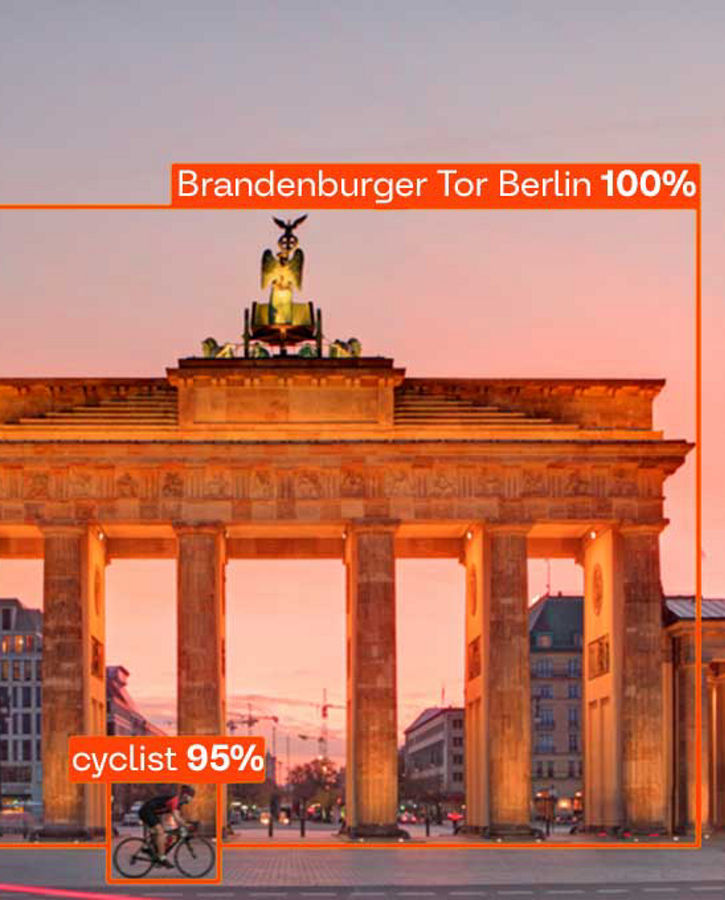Our AI Lab in Berlin offers the ideal framework and conditions for performing outstanding applied research in various AI topics such as Generative AI, Computer Vision, Explainable & Safe AI, Data for AI, Motion Planning for autonomous systems such as vehicles and robots, and Natural Language Processing. Our international team of AI experts, PhD candidates and Master students closely cooperate with experts from a wide range of corporate divisions to bridge the gap between research and application and to empower AUMOVIO through cutting-edge AI technologies. Located at the Merantix AI Campus in Berlin, we also benefit from contacts and cooperation with other AI companies and research institutions.
Collaborating in Germany’s center of AI expertise
AUMOVIO AI Lab Berlin
Who we are
What we do
At our AI Lab in Berlin, we are currently working on the following main projects:
Just Better Data (jbD)
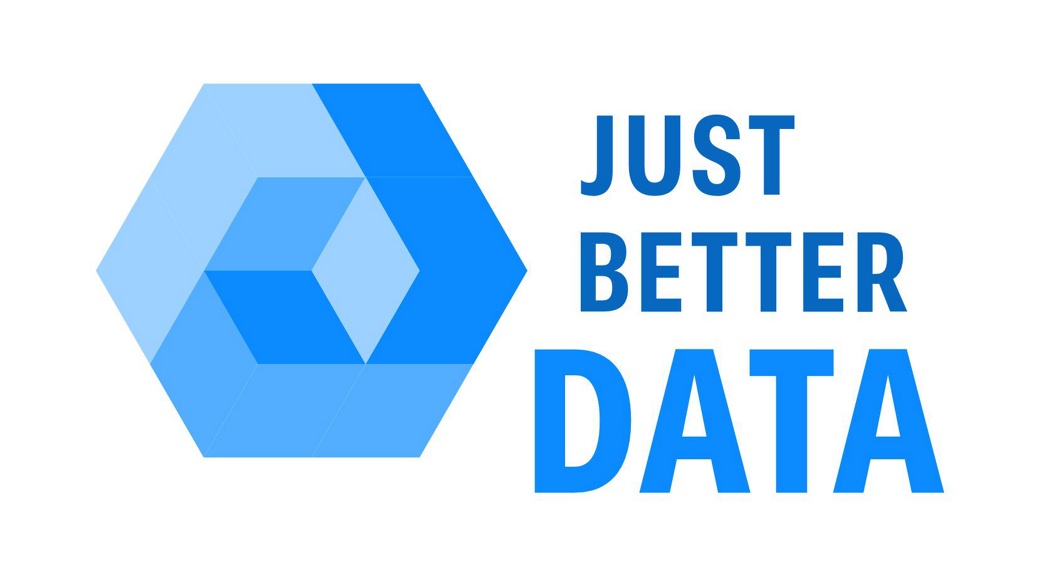
The Just better Data project’s aim is to create AI-driven methods and tools for gathering data efficiently and accurately. Instead of producing excessive amounts of data, the focus is on processing, evaluating, and selecting data directly on the recording vehicle's edge. AI algorithms are employed to identify missing data and fill them in with synthetic data, ensuring a fair and characteristic dataset.
nxtAIM
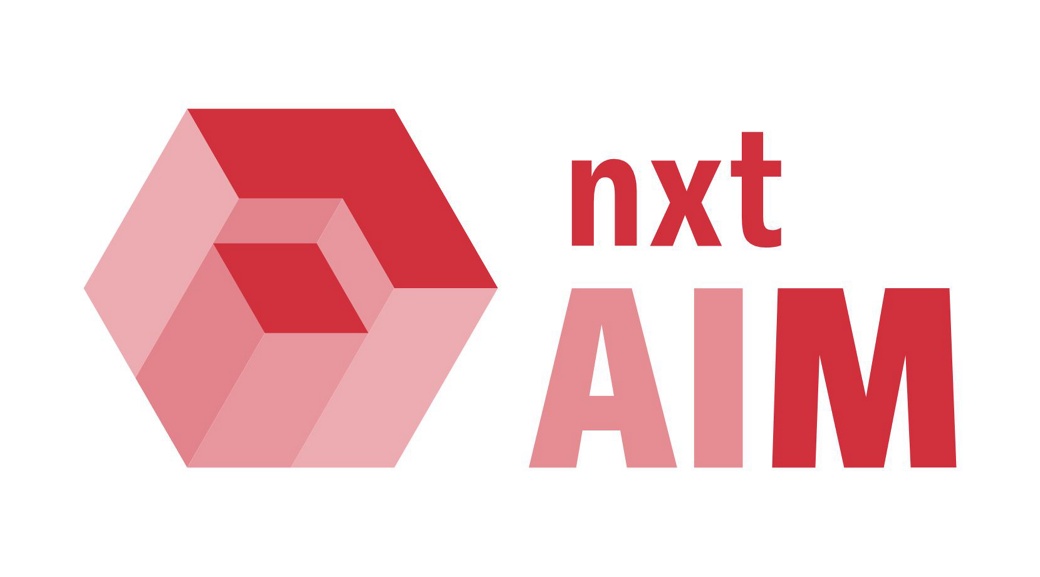
The nxtAIM project utilizes the massive potential of generative technologies to develop new approaches for better scalability, transferability, and traceability of autonomous driving functions that, so far, have been very limited in their scope of use. The focus is on developing generative methods that are complementary to the established discriminative methods of artificial intelligence.
SafeAI
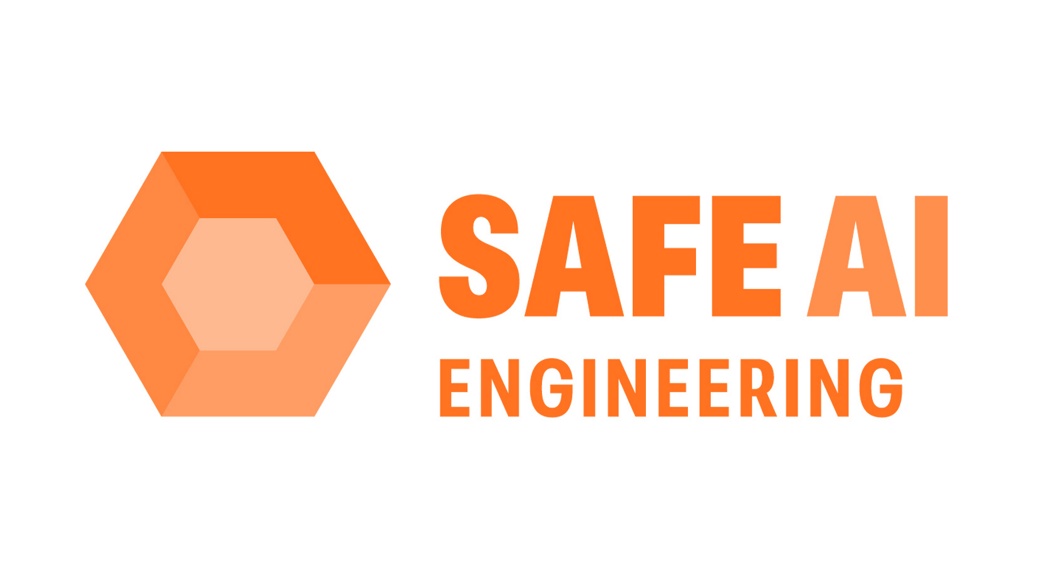
The objective of the project is the creation of a safety argumentation for AI functions used in autonomous driving throughout the entire lifecycle. This includes the stages of planning, development, testing, deployment, monitoring and integration into the overall system. The focus is on orchestrating and interlinking the various elements of such a safety argumentation in order to demonstrate how AI functions can be permanently and reliably secured across the entire AI lifecycle.
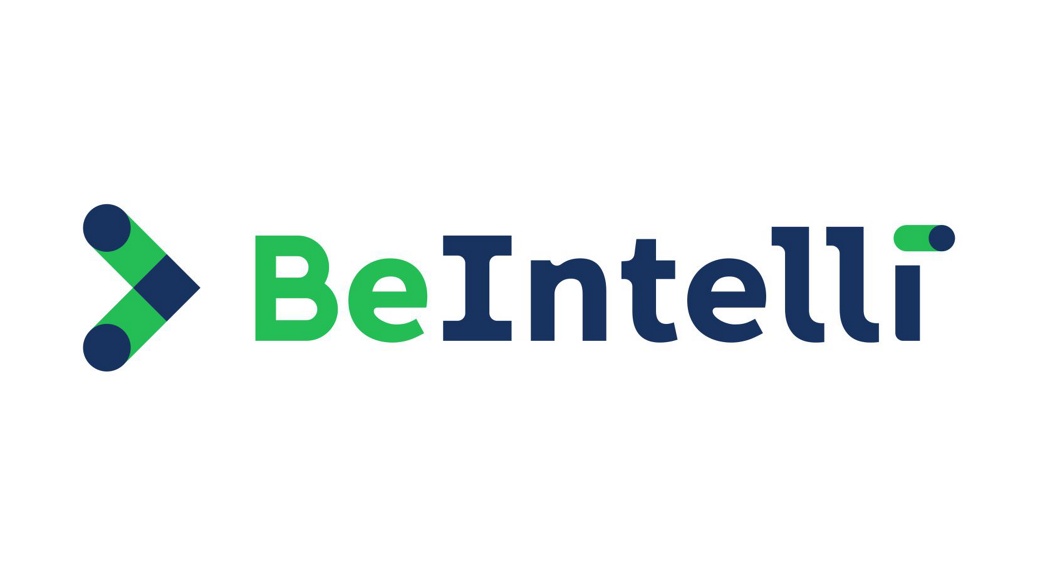
In the BeIntelli project, our AI Lab robotics team developed the AUMOVIO AMR (autonomous mobile robots) prototype for operation in public spaces. The robot is operated by our AI-based software stack for perception, localization, and navigation as well as safety. It is the first fully automated AMR to have ever obtained a driving permission for public areas in Berlin,including the busy Kurfürstendamm and Otto-Suhr-Allee boulevards.
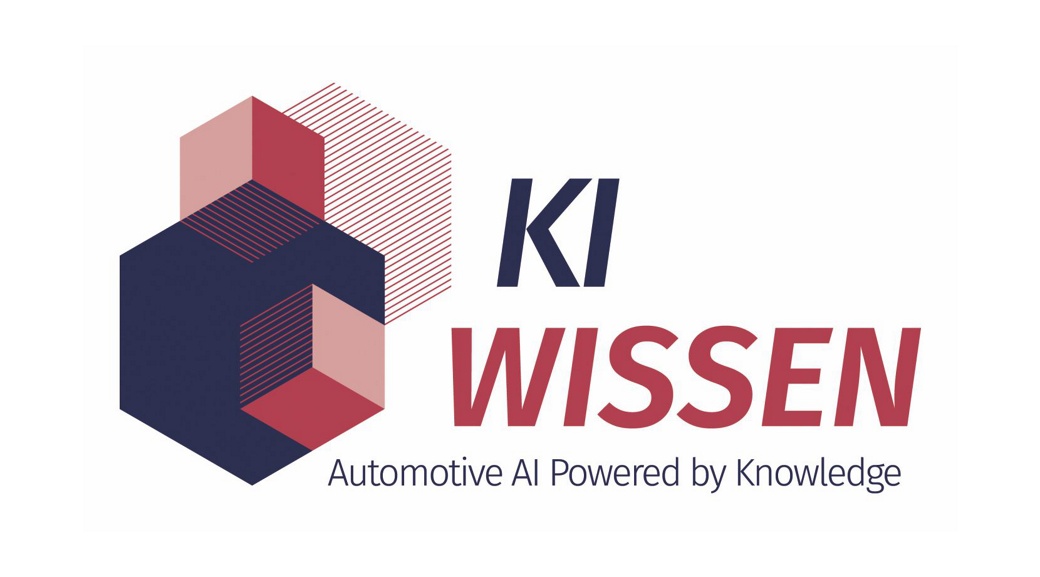
In KI Wissen projects, we developed and investigated methods for integrating existing knowledge into the data-driven AI functions of autonomous vehicles.
The goal of the project is to create a comprehensive ecosystem for the integration of knowledge into the training and safeguarding of AI functions, thereby completely redefining the basis for training and validating of AI functions.
Publications
Archived Publications
The following publications were released at a time when AUMOVIO was still operating under its former company name, Continental Automotive. For this reason, the previous company name still appears in the publications. Please note that we have no influence over the company name used in already published materials.
- Aditi Bhalla, Christian Hellert, Nastassja Becker, Enkelejda Kasneci. TRUCE-AV: A Multimodal dataset for Trust and ComfortEstimation in Autonomous Vehicles. In European Conference on AI (ECAI).
- Mert Keser, Halil Ibrahim Orhan, Niki Amini-Naieni, Gesina Schwalbe, Alois Knoll, Matthias Rottmann. Benchmarking Vision Foundation Models for Input Monitoring in Autonomous Driving. In British Machine Vision Conference (BMVC).
- Mohamed-Khalil Bouzidi, Bojan Derajic, Daniel Goehring, Joerg Reichardt. Reachability-Based Contingency Planning against Multi-Modal Predictions with Branch MPC. In IEEE Intelligent Vehicles Symposium (IV).
- Bojan Derajic, Mohamed-Khalil Bouzidi, Sebastian Bernhard, and W. Hönig. Learning Maximal Safe Sets Using Hypernetworks for MPC-Based Local Trajectory Planning in Unknown Environments. In IEEE Robotics and Automation Letters.
- Kumar Manas, Mert Keser, Alois Knoll. Integrating Legal and Logical Specifications in Perception, Prediction, and Planning for Automated Driving: A Survey of Methods. In IEEE IAVVC.
- Mohamed Parvez Aslam, Bojan Derajic, Mohamed-Khalil Bouzidi, Sebastian Bernhard and Jan Oliver Ringert. Model Predictive Control for Crowd Navigation via Learning-Based Trajectory Prediction. In International Conference on Informatics in Control, Automation and Robotics (ICINCO).
- Motzkus, F., Schmid, U. Concepts Guide and Explain Diffusion Visual Counterfactuals. In The 3rd World Conference on Explainable AI (xAI-2025).
- Tanmay Chakraborty, Christian Wirth, and Christin Seifert. Comparative Explanations: Explanation Guided Decision Making for Human-in-the-Loop Preference Selection. In The 3rd World Conference on Explainable AI (xAI-2025).
- Tanmay Chakraborty, Christin Seifert, and Christian Wirth. Explainable Bayesian optimization. In The 3rd World Conference on Explainable AI (xAI-2025).
- Manas Kumar and Adrian Paschke. Knowledge integration strategies in autonomous vehicle prediction and planning: A comprehensive survey. In IEEE Intelligent Vehicles Symposium (IV).
- Yue Yao, Mohamed-Khalil Bouzidi, Daniel Goehring, Joerg Reichardt. EP-Diffuser: An Efficient Diffusion Model for Traffic Scene Generation and Prediction via Polynomial Representations. In IEEE Robotics and Automation Letters (RA-L).
- Manas Kumar, Christian Schlauch, Adrian Paschke, Christian Wirth, Nadja Klein. Uncertainty-Aware Trajectory Prediction via Rule-Regularized Heteroscedastic Deep Classification. In Robotics Science and Systems (RSS).
- Mohamed-Khalil Bouzidi, Christian Schlauch, Nicole Scheuerer, Yue Yao, Nadja Klein, Daniel Goehring, Joerg Reichardt. Closing the Loop: Motion Prediction Models beyond Open-Loop Benchmarks”, in IEEE Intelligent Transportation Systems Conference (ITSC).
- Marius Kästingschäfer, Théo Gieruc, Sebastian Bernhard, Dylan Campbell, Eldar Insafutdinov, Eyvaz Najafli, Thomas Brox. SEED4D: A Synthetic Ego–Exo Dynamic 4D Data Generator, Driving Datasetand Benchmark. In Winter Conference on Applications of Computer Vision (WACV).
- Yue Yao, Shengchao Yan, Daniel Goehring, Wolfram Burgard, Joerg Reichardt. Improving Out-of-Distribution Generalization of Trajectory Prediction for Autonomous Driving via Polynomial Representations. In IEEE/RSJ International Conference on Intelligent Robots and Systems (IROS).
- Yue Yao, Daniel Goehring, Joerg Reichardt. Beyond In-Distribution Performance: A Cross-Dataset Study of Trajectory Prediction Robustness. In 16. FAS-Workshop.
- Bouzidi, M.-K., Derajic, B., Goehring, D., Reichardt, J. Motion Planning under Uncertainty: Integrating Learning-Based Multi-Modal Predictors into Branch Model Predictive Control. In the International Conference on Intelligent Transportation Systems (ITSC-2024).
- Bouzidi, M.-K., Yao, Y., Goehring, D., Reichardt, J. Learning-Aided Warmstart of Model Predictive Control in Uncertain Fast-Changing Traffic. In the International Conference on Robotics andAutomation (ICRA).
- Manas K., Zwicklbauer, S., Paschke, A. LLM based framework for Metric Temporal Logic Formalization of Traffic Rules. In the 2024 IEEE Intelligent Vehicles Symposium (IV).
- Mikriukov, G., Schwalbe, G., Motzkus, F., Bade, K. Unveiling the Anatomy of Adversarial Attacks: Concept-Based XAI Dissection of CNNs. In the 2nd World Conference on Explainable AI (xAI-2024).
- Motzkus, F., Mikriukov, G., Hellert, C., Schmid, U. Locally Testing Model Detections for Semantic Global Concepts. In xAI-2024.
- Sbeyti, M. K., Karg, M., Wirth C., Klein, N., Albayrak, S. Cost-Sensitive Uncertainty-Based Failure Recognition for Object Detection. In the Uncertainty in AI Conference (UAI).
- Schlauch, C., Wirth, C., Klein, N. Informed Spectral Normalized Gaussian Processes for Trajectory Prediction (Preprint). In ECAI-2024.
- Shoeb, Y., Chan, R., Schwalbe, G., Nowzad, A., Güney, F., Gottschalk, H. Have We Ever Encountered This Before? Retrieving Out-of-Distribution Road Obstacles From Driving Scenes. In the Winter Conference on Applications of Computer Vision (WACV-2024).
- Chakraborty, T., Wirth, C., Seifert, C. Post-hoc Rule Based Explanations for Black Box Bayesian Optimization. In ECAI 2023 International Workshops.
- Kesser, M. Real-Time Explainable Plausibility Verification for DNN-based Automotive Perception. In the 1st World Conference on Explainable AI xAI-2023 & Late-breaking Work, Demos and Doctoral Consortium Joint Proceedings.
- Manas, K. and Paschke, A. Semantic Role Assisted Natural Language Rule Formalization for Intelligent Vehicle. In the International Joint Conference on Rules and Reasoning.
- Manas, K. and Paschke, A. Legal Compliance Checking of Autonomous Driving with Formalized Traffic Rule Exceptions. In Workshop on Logic Programming and Legal Reasoning in conjunction with 39th International Conference on Logic Programming (ICLP).
- Mikriukov, G., Schwalbe, G., Hellert, C., Bade, K. Revealing Similar Semantics Inside CNNs: An Interpretable Concept-based Comparison of Feature Spaces. In the AIMLAI 2023 Workshop in conjunction with ECML-PKDD.
- Mikriukov, G., Schwalbe, G., Hellert, C., Bade, K. Evaluating the Stability of Semantic Concept Representations in CNNs for Robust Explainability. In the 1st World Conference on Explainable AI (xAI-2023).
- Sbeyti, M. K., Karg, M., Wirth C., Nowzad, A., Albayrak, S. Overcoming the Limitations of Localization Uncertainty: Efficient & Exact Non-Linear Post-Processing and Calibration. In ECML-PKDD 2023, Research Track.
- Schlauch, C., Wirth, C., Klein, N. Informed Priors for Knowledge Integration in Trajectory Prediction. ECML-PKDD 2023, Research Track.
- Yao, Y., Goehring, D., Reichardt, J. An Empirical Bayes Analysis of Object Trajectory Models. In the International Conference on Intelligent Transportation Systems (ITSC 2023).
Our AI experts and PhD candidates
At our AI Lab in Berlin, our AI experts, PhD candidates and Master students closely cooperate with experts from the entire organization. For insights into the innovative work being done by our experts and researchers, head to our team overview.
